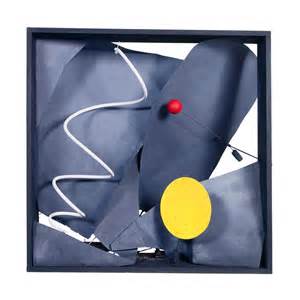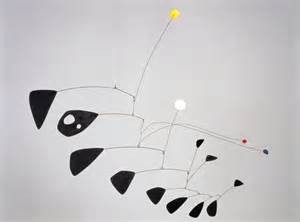
Mobile inventions – but not phones – great art!!
Celebrated as the “originator of the mobile” (not phone) Alexander Calder – an American artist’s work is currently being exhibited at The Tate Modern London. On the third floor of this unusually architecturally “different” venue, you can see 3 dimensional artworks and mobiles too. Calder was influenced by Mondrian, Miro and other artists who engineered a new way of creating art that was deceptive in its simplicity especially as in Calder’s case, he had a degree in Mechanical Engineering before he turned to mobiles, films and 3D art – the films displaying circus-like animation and humorous interpretations of everyday events.
Calder’s parents were both artists. He was an American who was influenced to create mobiles associated with flight and so feather-like replicas are included in some of his most celebrated pieces. The final piece in the show is a mobile all in black with many feather-like pieces attached.
Most of the works in the exhibition date back to the 30s and 40s and Marcel Duchamp coined the word “mobiles” to describe Calder’s creations (in 1931). Calder attracted a following through the Paris Avant Garde. He had a lifelong interest in the performing arts. His work was influenced by music and choreography as well as by famous and celebrated artists in their own right.
You can see wire sculptures as well as mobiles and 3 dimensional artworks until April3 at The Tate Modern London. You can go there via St Pauls underground and over the Foster bridge or find a different method of approach on the South Bank of London. Either way the journey of approach adds to the enjoyment of the art at Tate Modern London.
Enjoy!
Penny Nair Price

